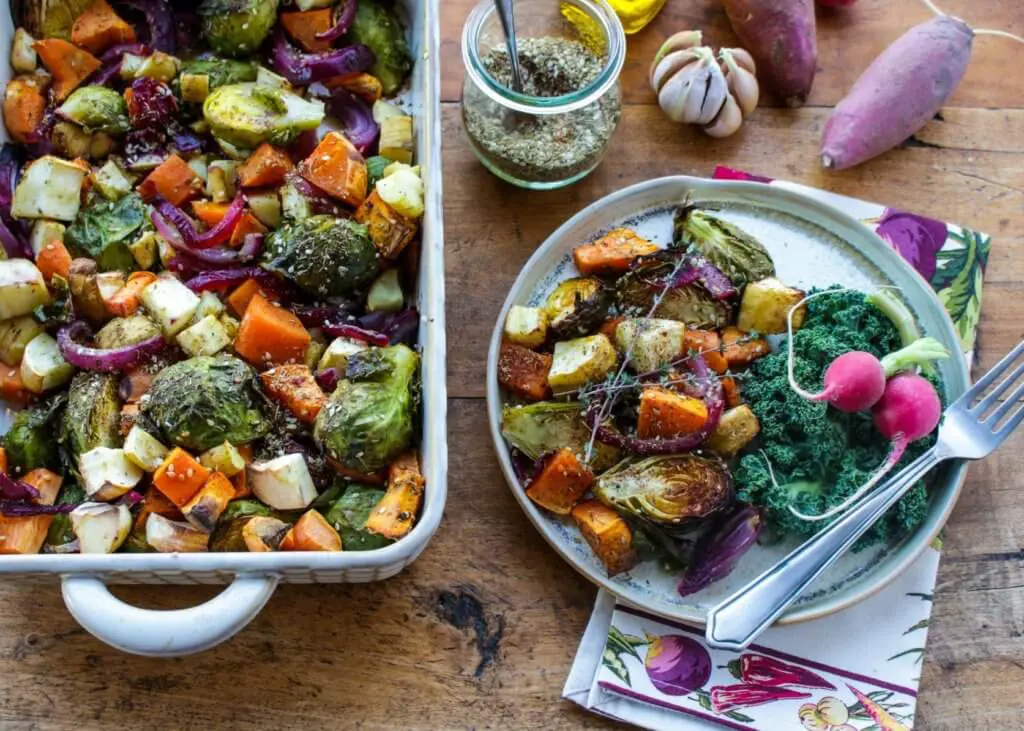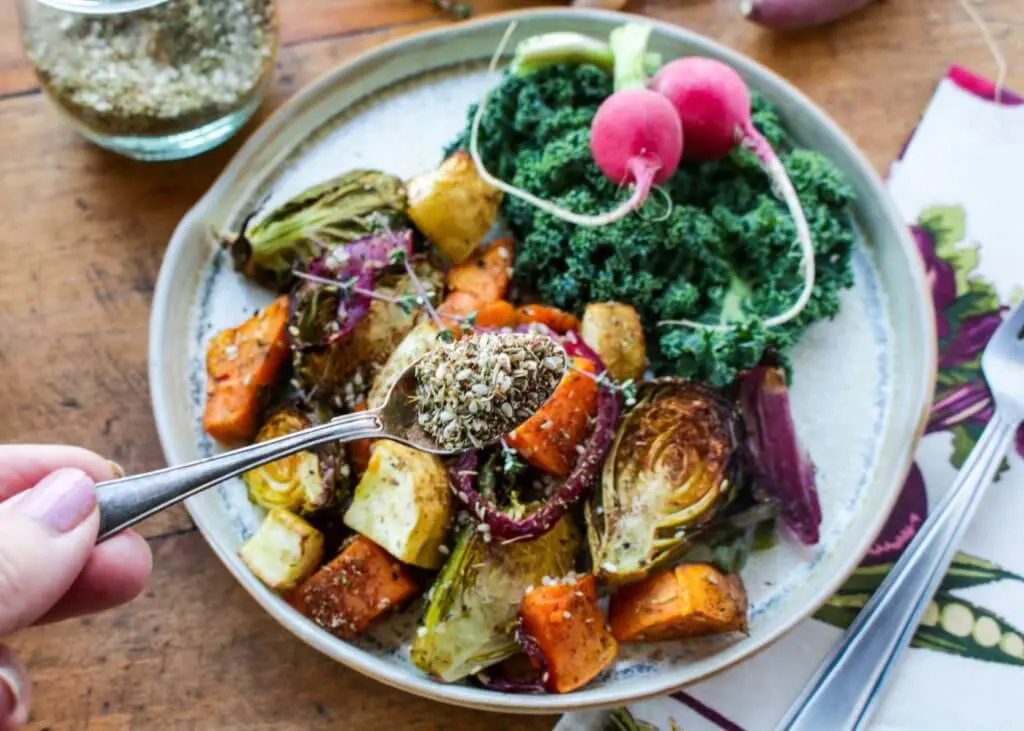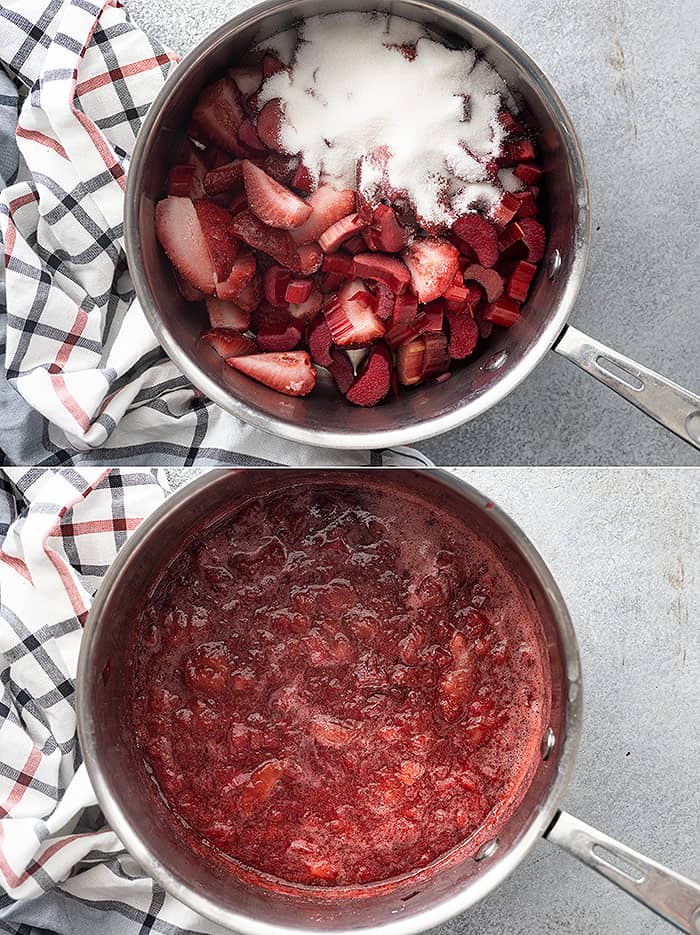Roasted Winter Vegetables with Za’atar
There’s something deeply comforting about roasting vegetables in the colder months. The way the oven fills the kitchen with rich, earthy aromas as roots caramelize and edges crisp is pure seasonal magic. When you add za’atar into the mix—an aromatic Middle Eastern spice blend—you take your winter vegetable game to the next level. This recipe for Roasted Winter Vegetables with Za’atar is not only incredibly flavorful but also packed with nourishment and vibrant color to brighten even the greyest days.
In this post, we’ll explore how to bring out the best in hearty vegetables like carrots, parsnips, sweet potatoes, and Brussels sprouts by roasting them until golden, then tossing them with olive oil and za’atar for a zesty, savory finish. This dish is entirely vegan, naturally gluten-free, and simple enough for weeknight dinners while also being elegant enough for holiday spreads.
What is Za’atar?
Za’atar is a spice blend commonly used in Middle Eastern cuisine. While variations exist across regions, it generally includes dried thyme, sumac, sesame seeds, and oregano or marjoram. It has a slightly lemony flavor from the sumac, an herby aroma, and a satisfying nuttiness from the sesame seeds.
When paired with roasted vegetables, za’atar adds a unique brightness and depth that balances the natural sweetness of root vegetables. It’s an easy way to elevate a basic roast into something that feels a little more special—without adding any complicated steps.
Why This Recipe Works

Roasting is one of the best methods to cook winter vegetables. It enhances their sweetness, adds a bit of texture, and helps retain nutrients better than boiling. This recipe uses a mix of common and affordable vegetables, each offering something special:
- Carrots: Slightly sweet and vibrant, they add color and texture.
- Parsnips: Earthy and subtly spiced with a potato-like bite.
- Sweet Potatoes: Naturally creamy and rich, offering a soft contrast.
- Brussels Sprouts: Slight bitterness that balances the sweet and savory notes.
These are cut evenly for uniform roasting and tossed with a good-quality olive oil before baking at high heat for caramelization. Once they’re golden and cooked through, a final dusting of za’atar brings everything together.
Ingredients You’ll Need

To keep this recipe simple and budget-friendly, you’ll just need a handful of pantry staples and fresh produce:
- 2 large carrots, peeled and sliced
- 2 parsnips, peeled and chopped
- 1 medium sweet potato, cubed
- 1 cup Brussels sprouts, halved
- 3 tablespoons olive oil
- 2 tablespoons za’atar (store-bought or homemade)
- 1/2 teaspoon sea salt
- 1/4 teaspoon black pepper
- Optional: lemon juice or tahini for drizzling
How to Make Roasted Winter Vegetables with Za’atar

Step 1: Preheat and Prep
Preheat your oven to 425°F (220°C). Line a large baking sheet with parchment paper for easier cleanup.
Step 2: Prepare the Vegetables
Wash, peel, and chop the vegetables into similar-sized pieces so they cook evenly. Pat dry if necessary to help them crisp up.
Step 3: Season and Toss
In a large bowl, toss the vegetables with olive oil, salt, and pepper. Don’t add the za’atar yet—it will be sprinkled on after roasting to preserve its delicate flavors.
Step 4: Roast
Spread the vegetables out in a single layer on the baking sheet. Don’t overcrowd—this helps them roast rather than steam. Bake for 30–35 minutes, flipping halfway through, until the vegetables are fork-tender and golden on the edges.
Step 5: Finish with Za’atar
As soon as the vegetables come out of the oven, sprinkle them with za’atar and toss gently to coat. The heat will release the aromas of the herbs without burning them.
Step 6: Serve
Serve warm, optionally drizzled with a bit of tahini or fresh lemon juice. These vegetables are delicious on their own, or as a side dish with grains, salads, or roasted proteins.
Tips for Best Results

- Don’t overcrowd the pan: Use two trays if needed to ensure the veggies roast evenly and get crispy.
- Use fresh za’atar: Old spices lose flavor. If yours smells dull, it’s time to refresh.
- Toss after roasting: Adding za’atar before roasting can lead to bitterness or burning.
- Add protein: Turn this into a complete meal by serving with quinoa, lentils, or chickpeas.
Serving Suggestions
This dish is incredibly versatile. Here’s how you can enjoy it:
- On a bowl of grains like farro, couscous, or quinoa.
- As a side to roasted tofu, tempeh, or grilled portobello mushrooms.
- Over a bed of greens with a lemon tahini dressing.
- Tucked into a wrap or pita with hummus for a hearty lunch.
Make It Ahead
These vegetables reheat beautifully and can be stored in the refrigerator for up to 4 days. You can also roast them ahead for meal prep and add to grain bowls or lunchboxes throughout the week.
Why You’ll Love This Recipe
- Naturally vegan and gluten-free
- Perfect for winter or fall
- Minimal ingredients and prep
- Kid- and crowd-friendly
- Ready in under 45 minutes
This Roasted Winter Vegetables with Za’atar recipe is proof that simple ingredients can create rich, memorable meals. Whether you’re hosting dinner guests, meal prepping for the week, or just craving something cozy, this dish delivers flavor, color, and nourishment in every bite.

Roasted Winter Vegetables with Za’atar
Ingredients
Method
- Preheat oven to 425 °F (220 °C). Line a large rimmed baking sheet with parchment for easy cleanup.
- Prepare vegetables: peel carrots and parsnips, cube the sweet potato, halve Brussels sprouts, and slice red onion wedges. Aim for similar-sized pieces so everything roasts evenly.
- In a large bowl, toss all vegetables with olive oil, sea salt, and pepper until lightly coated. Spread in a single layer on the prepared baking sheet, leaving space between pieces so they roast instead of steam.
- Roast for 20 minutes, then remove tray and flip or stir vegetables for even browning. Return to oven and roast 10-15 minutes more, until edges are caramelized and centers are fork-tender.
- Immediately after removing from the oven, sprinkle vegetables evenly with za’atar. Toss gently on the hot tray so the spices cling without scorching.
- Transfer to a serving platter. Finish with a squeeze of fresh lemon juice or a light drizzle of tahini if desired. Serve warm as a side or over grains as a hearty vegan main.
Notes
• Mix up the vegetable lineup based on what you have: try beets, turnips, red potatoes, or cauliflower.
• Meal prep tip: roast double the veggies and store in airtight containers up to 4 days. Reheat in a 375 °F oven for 8-10 minutes to revive crisp edges.
• Pair this dish with hummus, quinoa, or a simple lentil salad for a complete protein-packed meal.
• Make homemade za’atar by combining 2 tbsp dried thyme, 2 tbsp toasted sesame seeds, 1 tbsp sumac, and 1 tsp dried oregano.








